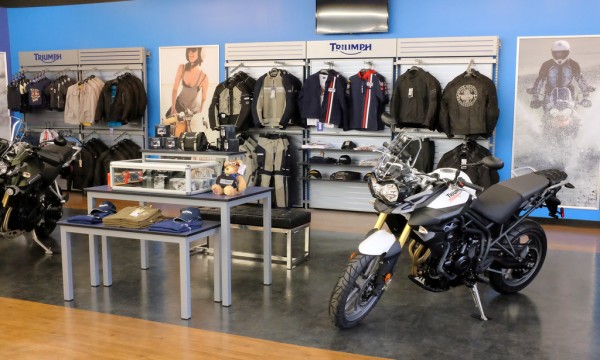Just like any business, motorcycle dealerships are constantly looking at ways to boost sales. New revenue can help fuel expansion or  simply replace monies lost over time as customers change their buying habits.
simply replace monies lost over time as customers change their buying habits.
Key channels for sales growth are:
- Organic growth – Selling more stuff to the existing customer base via promotion, discounts, etc.
- Geographic expansion – Selling to wider market area (establish additional dealership locations, etc.)
- Product line extensions – Adding new products (bikes, accessories, etc.) to the store
Each of these channels need attention by dealership management to strive for growth. For instance, a combination of geographic and organic growth would require a dealership to greatly expand its Internet presence.
We all know that e-commerce is becoming a bigger slice of the retail marketplace. Dealers who successfully implement online selling have the opportunity to grow sales in ways unavailable to them in their brick and mortar operations. The logistics of starting (or expanding) an online business can be daunting. Set-up can carry lots of software costs, demands for computer hardware, personnel to support the effort, and the potential for a huge increase in inventory carrying costs.
Properly executed, an e-commerce business model can add substantially to a dealership’s revenue. However, bungling this effort can put the dealership in serious financial jeopardy.
Geographic expansion is a tough one. If a dealer wants to set up another store to sell new bikes, he needs the full cooperation of the manufacturer. Authorizing a new location is not taken lightly by the manufacturers. As I noted in a previous column, the manufacturer reviews a lot of market and sales data before establishing a new selling territory that will be anchored by a dealership. Once that decision is made, it takes a lot of money to set up a physical location.
Opening another store can require real estate, construction/renovation, inventory acquisition, staff hiring, and equipment purchase. A dealer better have deep pockets before he tries this route!
Product line extension offers a host of opportunities for the dealership to increase income. The simplest way is to increase the variety of accessories and apparel that are presented to the buying public. Just making choices from the myriad of products available can be challenging.
At last year’s AIMExpo motorcycle and accessory show in Orlando, there were over 500 booths displaying products available to the motorcycling community, and that only represented a fraction of the total product offerings for the industry.
Harley-Davidson, the acknowledged king of accessory sales, racked up a total of $1.2 billion in 2013 sales of parts, accessories, & general merchandise. That’s 20 percent of its total sales. Adding new items to dealership inventory is a drain on cash as suppliers must be paid – usually well before the items are sold. Making the wrong stocking decisions can get a dealership into financial trouble in pretty short order, too.
Another product line extension is so obvious as to be overlooked – the addition of new models by a manufacturer. Every new model added to the line-up gives dealerships an opportunity for incremental sales growth. For example, for 2015, Triumph is selling four distinct versions of its Tiger 800 adventure model.
One particularly interesting area of model proliferation currently is the small displacement category. It is slowly expanding in an attempt to lure new, younger riders into the motorcycling community.
In my next Dealer Perspective column, I’ll take a more detailed look at this critical area of the motorcycle retail experience.
 Ride CT & Ride New England Serving New England, NYC and The Hudson Valley!
Ride CT & Ride New England Serving New England, NYC and The Hudson Valley!


